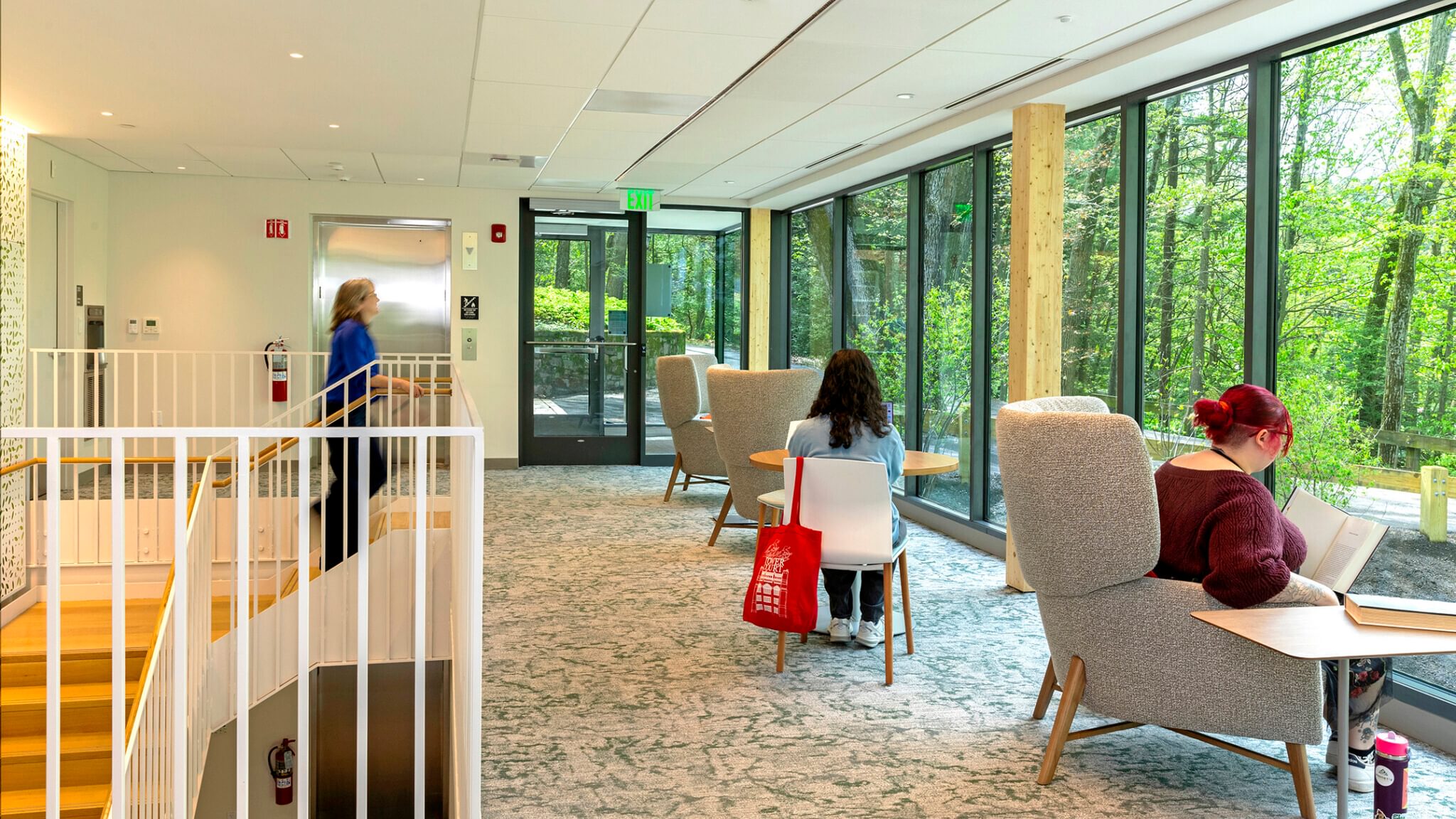When students returned from spring break in March, Health Services and the Stone Center Counseling Service reopened in Wellesley’s newly constructed Vivian A. Kao ’04 Health and Counseling Center. The two-story, 12,000-square-foot, all-electric structure is on track to earn LEED (Leadership in Energy and Environmental Design) gold certification. It replaces Simpson Hall on the east side of the Science Complex.
Wellness at Wellesley has been centered on this plot of campus for over a hundred years. Simpson Cottage was built there in the 1880s, providing a quieter living environment than the imposing College Hall, where most students resided at the time. A few decades later the cottage became the campus hospital, and in the early 1940s, an adjoining building—Simpson Hall—was constructed as a state-of-the-art health care facility.
In more recent history, the Stone Center and Health Services operated out of Simpson Cottage and Simpson Hall, respectively. (The hall was demolished, but the cottage, one of the oldest buildings on campus, was preserved and will eventually house the Wellesley Centers for Women.) Both programs offered their services in the College Club during construction of the new facility.
Alvin Hung, assistant director of design on the College’s facilities management team and project manager for the health and counseling building, says it was important to house the two services together. “We think they should be co-located in terms of a holistic care model—health and counseling together to create that synergy,” he explains.
“Our philosophy of this holistic wellness approach goes not only for the programmatic, for the aesthetic, but also the way we approach construction,” Hung adds. As a sustainability measure, the College opted for a prefabricated structure, working with a New Hampshire company that uses local, natural materials and reduces waste by producing structures in a factory setting. “The gut of this building is timber from New England,” says Hung.

The interior incorporates elements of biophilic design, which connects architecture with the natural environment—leaf patterns, for example, are a motif throughout the building. The architectural firm, Shepley Bulfinch, “wanted to use finishes that are not only healthy for the occupants but use these biomorphic forms and patterns that enhance cognitive performance while helping to reduce stress,” the building’s interior designer, Amanda Vigneau ’05, said in an email. “Carpet selections for the project connected to patterns and textures reminiscent of the light-dappled earth through the trees or the movement of the sand at the edge of lake, while wood was used throughout [and] accent paint drew inspiration from the changing colors of the landscape.”
Vigneau said great care also went into achieving “the right balance of open, closed, and layered spaces, taking advantage of its beautiful site in the woods.” She noted that the “biophilic concept was especially important when planning this type of facility because of students’ inherent vulnerability in seeking help for these services.” The lobby, for example, is designed to connect the inside with the outdoors, creating a welcoming and bright environment for visitors seeking wellness services.
The College also kept the foundation of Simpson Hall, which dates to 1941 but was “in very, very good shape,” says Hung. Removing it and pouring a new concrete foundation or starting fresh in another location would have been easier—but not in line with the College’s sustainability goals.
“We decided to turn the next chapter in a way that looks back and then creates something that has that continuity. That’s something I feel very passionate about and feel very proud of,” says Hung. “We could have done this in a very different way, and we decided to do it in a way that’s very Wellesley. We know that it’s not going to be an easy way, but we choose the hard way because we believe in what we believe in.”
